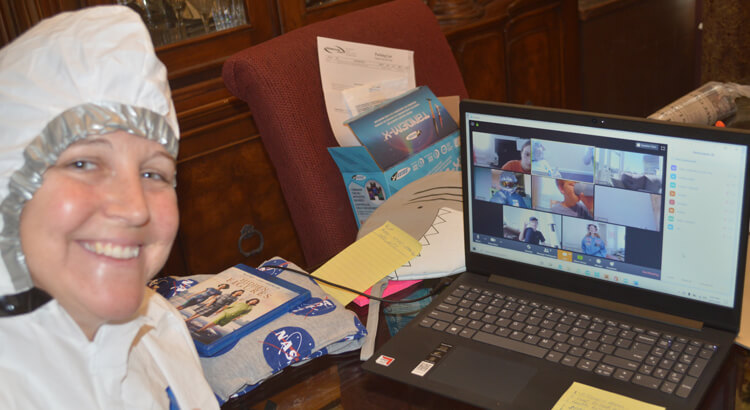Teaching history during a pandemic is very difficult, especially in an elementary school where math and English language arts are the top priority. But the fight over which subject should receive the most instructional time doesn’t need to take place any longer.
Teachers can stop their inner struggle and heal all their wounds by integrating history standards across the curriculum using hands-on history. If you are teaching virtually or in-person behind plexiglass and masks, you can help heal your students’ lack of history knowledge by integrating project-based learning into your classroom.
Some of my greatest lessons have been developed during the COVID-19 pandemic because my students begged to continue dressing up, building historical projects, and integrating primary sources into our lessons. Even though I felt like I was teaching a world away due to virtual learning, I knew that I had to live up to my 5th graders’ expectations.
During our Cold War unit in March 2020, we researched the space race, dressed up as astronauts, and recreated the events that led to America’s landing on the moon using Legos along with a tennis ball. The students and I researched to create a reenactment of the rise and fall of the Berlin Wall using toy airplanes, Legos, Playdough, Lincoln Logs, and builders’ vests. Guest speakers joined our virtual classes to engage students with first-hand oral history.
We did not give up on a Lowell Milken Unsung Hero Project that we had been working on for seven months. Our perseverance paid off and one of our projects won the National Discovery Research Award for Outstanding Elementary School Project along with a check for $1,000. The students were able to see first-hand how perseverance is important for all ages.
As I’ve transitioned to teaching hybrid in the fall of 2020 (virtual in the morning and in-person in the afternoon), I continue to design fresh new lessons that allow my students to dress up, study history, and integrate English language arts. Hands-on history allows the students the opportunity to forget about the pandemic for a while as we dress up and dive into a new era.
For example, the students dressed up as CSI agents with a fuzzy mustache to analyze Westward Expansion primary sources using our plexiglass as brainstorming boards to crack seven different crimes across the West during the late 1800s. Each group’s top secret file is differentiated to meet the needs of the learners by adding more rigorous 1800s letters and political cartoons for students that need to be challenged. Teamwork, close reading analysis, comparing/contrasting document details, and supporting their ideas using multiple primary sources as evidence are just a few of the strategies that are mastered during this hands-on activity.
I’m sure that there will be many more ups and downs throughout the 2020-2021 school year, but as long as we continue to keep our eye on the prize of a powerful hands-on historical educational experience for all our students, we can begin to heal the hearts and minds of our students.
This is part of a series of posts from nominees for our LifeChanger of the Year educator recognition program. We meet scores of fascinating LifeChangers every year who have interesting perspectives to share about children, education and life. Learn more about Mary Huffman on her LifeChanger of the Year profile.
TC100537(0418)3

